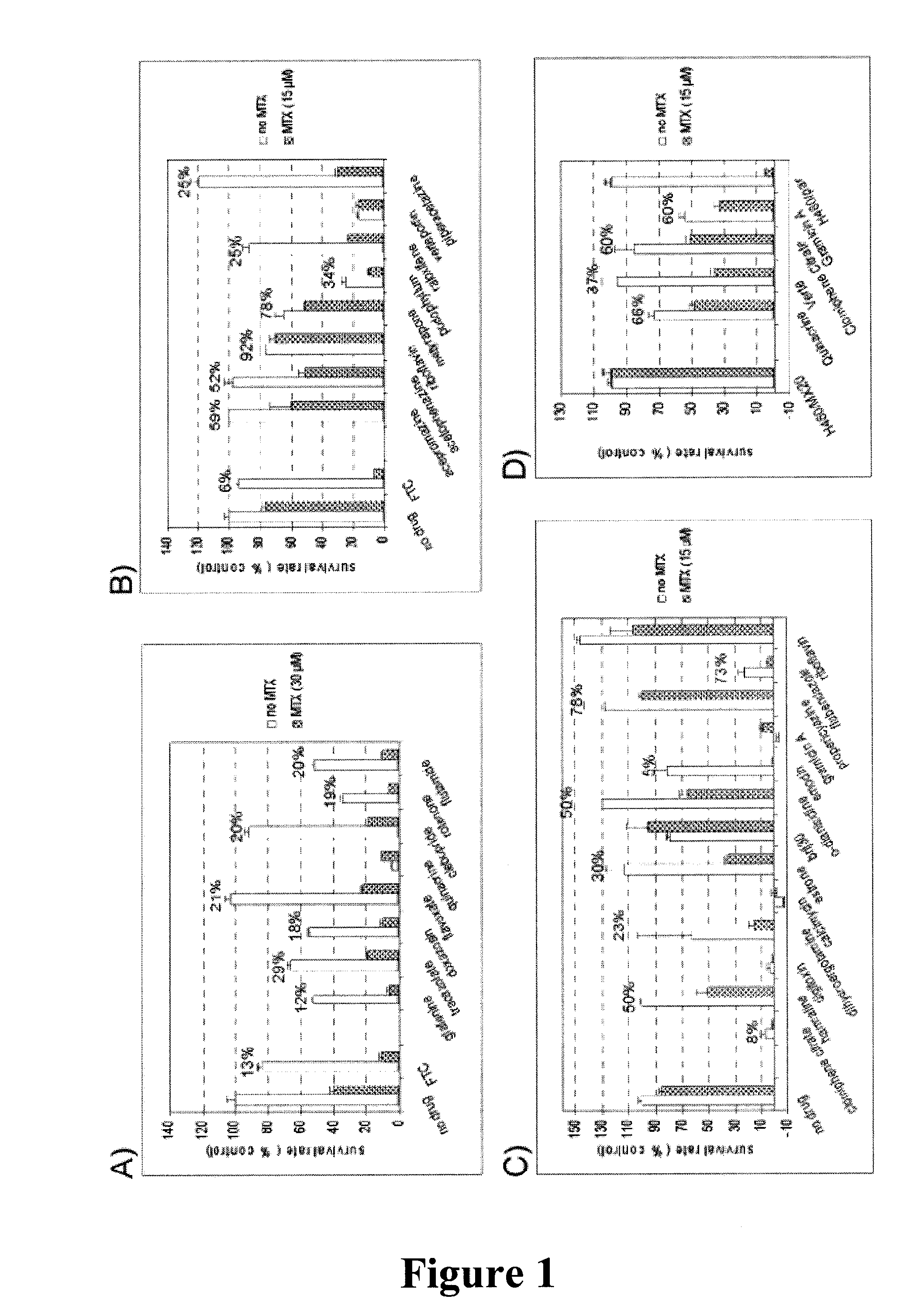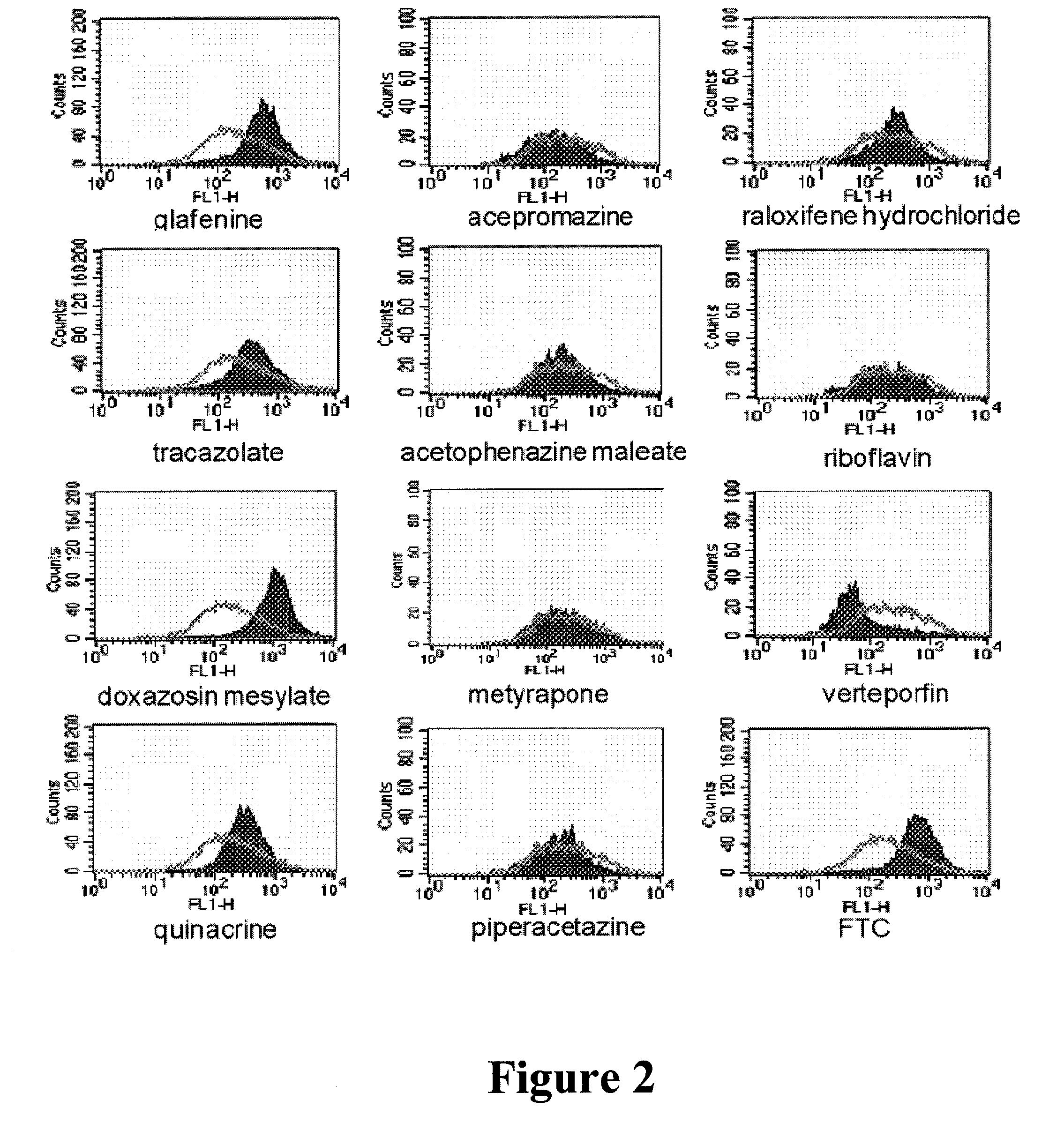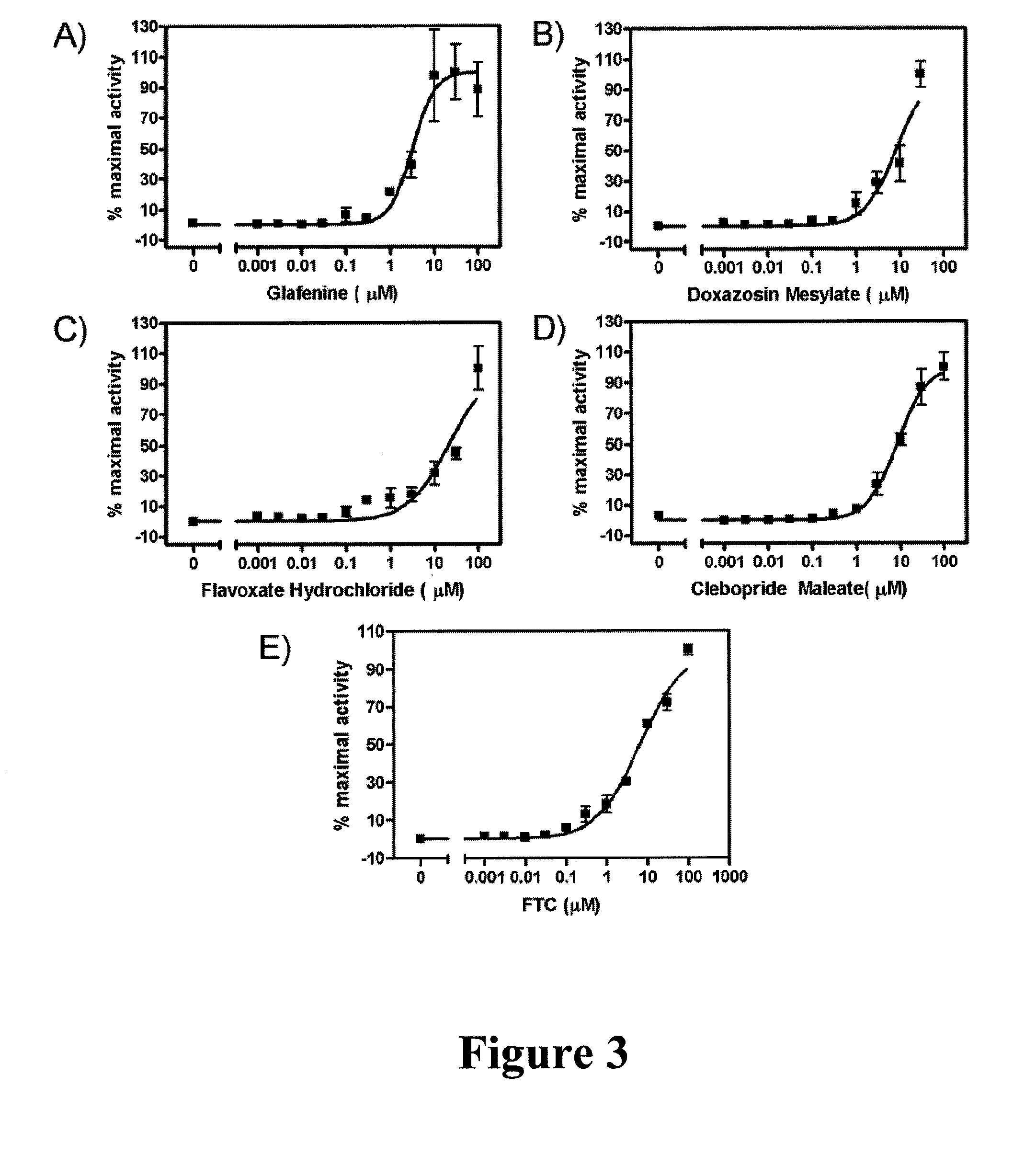Bioluminescence imaging-based screening assay and inhibitors of abcg2
a bioluminescence imaging and screening assay technology, applied in the field of bioluminescence imagingbased screening assay and abcg2 inhibitors, can solve the problems of remaining to be tested, and achieve the effect of improving the the greater effectiveness of a chemotherapeutic agen
- Summary
- Abstract
- Description
- Claims
- Application Information
AI Technical Summary
Benefits of technology
Problems solved by technology
Method used
Image
Examples
example 1
Bioluminescence Imaging (BLI) assay
[0115]Reagents. D-Luciferin sodium salt was obtained from Gold Biotechnology, Inc. (St. Louis, Mo.). Verapamil (VP), colchicine (Col), and MTX were purchased from Sigma Chemical Company (St Louis, Mo.). BODIPY-prazosin was obtained from Invitrogen (Carlsbad, Calif.). Glafenine, flavoxate hydrochloride and doxazocin mesylate were obtained from Sigma Chemical Company (St. Louis, Mo.). Fumitremorgin C (FTC) was a kind gift of Dr. S. Bates (National Cancer Institute). All compounds were prepared in dimethylsulfoxide (DMSO) for in vitro experiments. For in vivo experiments, ABCG2 inhibitor was dissolved in ethanol / cremophor EL / saline (1:1:6).
[0116]Cell lines. The establishment of ABCG2-overexpressing HEK293 cells stably transfected with CMV-luc2CP / Hygro (referred to here as HEK293 / ABCG2 / fLuc) has been described previously (Zhang et al., “Hedgehog pathway inhibitor HhAntag691 is a potent inhibitor of ABCG2 / BCRP and ABCB1 / Pgp,” Neoplasia, vol. 11, no. 1, ...
example 2
Mitoxantrone (MTX) Resensitization Assay
[0124]The ABC transporter-inhibiting ability of the potential inhibitors identified were further tested by evaluating their ability to resensitize ABCG2-overexpressing NCI-H460 / MX20 cells to MTX, or MDCKII cells overexpressing Pgp or MRP1, to Col. Cells were plated in 96-well plates at 1×104 per well and allowed to attach. MTX was added to 15 μM or 30 μM, with or without a putative ABCG2 inhibitor. Colchicine was added at 1 μM for MDCKII / Pgp cells and 0.3 μM for MDCKII / MRP1 cells. After two days of incubation cell viability was assessed using the XTT assay as described previously (Zhang et al., “Hedgehog pathway inhibitor HhAntag691 is a potent inhibitor of ABCG2 / BCRP and ABCB1 / Pgp,” Neoplasia, vol. 11, no. 1, pp. 96-101, 2009). In brief, 1 mg / ml XTT (Polysciences, Warrington, Pa.) was mixed with 0.025 mM PMS (Sigma), and 50 μl of the mixture was added to each well and incubated for 4 hours at 37° C. After the plates were mixed on a plate shak...
example 3
[0128]ABCG2-overexpressing HEK293 cells were plated in 6- well plates at a density of 1.1×106 cells per well and were allowed to attach. Cells were then changed into medium containing 0.25 μM BODIPY-prazosin (Robey, et al, “Mutations at amino-acid 482 in the ABCG2 gene affect substrate and antagonist specificity,” British journal of cancer, vol. 89, no. 10, pp. 1971-1978, 2003), and compound to be tested was added to a final concentration of 20 μM, followed by incubation at 37° C. for 1 h. Cells were then harvested, washed with ice-cold PBS once, resuspended in cold PBS, and analysed with flow cytometry. Analyses were performed with FACScan (Becton Dickinson, Fullerton, Calif.) with an excitation wavelength of 488 nm and an emission wavelength of 530 nm. Ten thousand events were counted per sample. The resultant histograms were analyzed with CellQuest software (Becton Dickinson).
[0129]Data analysis. Livinglmage (Xenogen Corp., Alameda, Calif.) and IGOR (W...
PUM
| Property | Measurement | Unit |
|---|---|---|
| concentrations | aaaaa | aaaaa |
| concentration | aaaaa | aaaaa |
| concentration | aaaaa | aaaaa |
Abstract
Description
Claims
Application Information
 Login to View More
Login to View More - R&D
- Intellectual Property
- Life Sciences
- Materials
- Tech Scout
- Unparalleled Data Quality
- Higher Quality Content
- 60% Fewer Hallucinations
Browse by: Latest US Patents, China's latest patents, Technical Efficacy Thesaurus, Application Domain, Technology Topic, Popular Technical Reports.
© 2025 PatSnap. All rights reserved.Legal|Privacy policy|Modern Slavery Act Transparency Statement|Sitemap|About US| Contact US: help@patsnap.com



